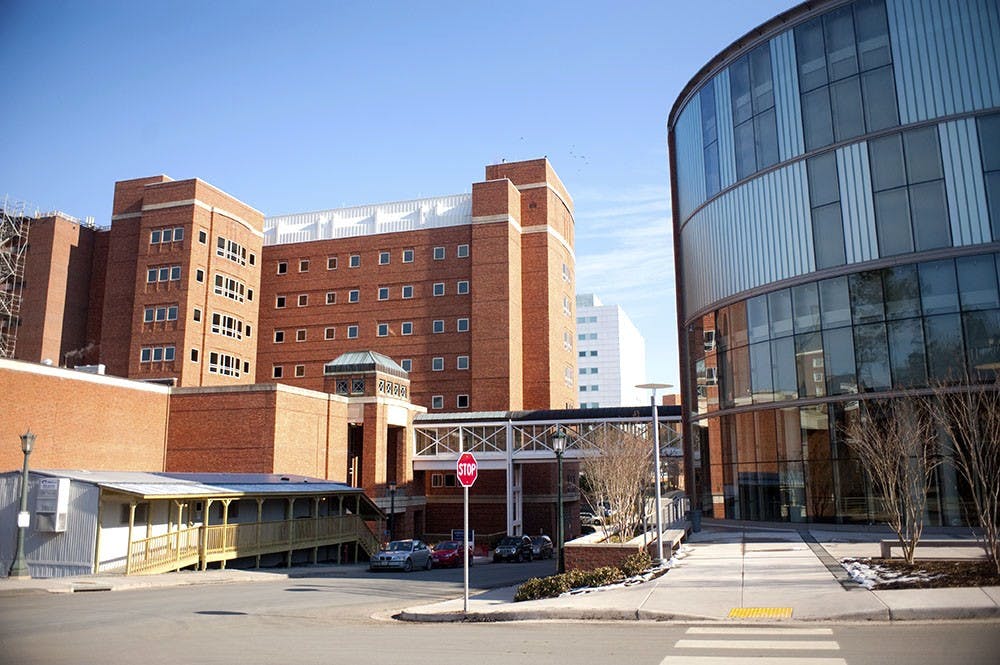The University Medical Center announced Monday it will become a majority shareholder of Culpeper Regional Hospital.
The Medical Center, which currently owns 49 percent of CRH, is slated to obtain majority ownership within 90 days, said Eric Swensen, a spokesperson for University of Virginia Health System.
“Leaders from CRH and U.Va. will be developing a plan to further integrate operations and clinical care,” Swensen said. “Once that plan is complete, we will have a better sense of any changes.”
One of the merger’s most significant implications is a change in board votes for the regional hospital. Once the transition is finalized, Swensen said the CRH board will be controlled largely by the University.
“Essentially, this means that U.Va. Medical Center will have a majority of the voting rights on the Culpeper Regional Hospital Board of Trustees, which governs the hospital’s operations,” Swensen said.
Though some adjustments to Culpeper Regional Hospital operations will naturally occur in response to the transferral of ownership, Business Administration Prof. Alan Beckenstein said the majority of changes will be minor.
“U.Va. owns 49 percent of the Culpeper Hospital already,” Beckenstein said. “This increase in ownership will not change things much at all.”
While Culpeper provides a variety of medical services, including primary care, an emergency department, heart care, cancer care, surgical services and medical imaging, patients requiring advanced care are often referred to the Medical Center.
“From Culpeper, a patient would typically go to [the] U.Va. Medical Center for specialized care that is typically not available at community hospitals such as Culpeper Regional Hospital, such as organ transplants,” Swensen said.
CRH spokesperson Sandy Boone agreed that technology and funding needed for innovative medical procedures and programs are oftentimes not available in a community hospital setting.
“For example, [CRH] does not have cardiac catheterization tests,” Boone said. “If a patient is in need of this procedure, we send them to Charlottesville.”
In 2013, the Medical Center had approximately 40,000 inpatient visits, 764,000 outpatient visits to clinics and more than 60,000 visits to the ER. In the same year, CRH had approximately 3,200 inpatient visits, 48,000 outpatient visits and 31,000 ER visits.
The change in ownership is limited to Culpeper Regional Hospital. Other entities of the Culpeper Regional Health System, including the Powell Wellness Center, the Free Clinic of Culpeper, the Culpeper Hospital Auxiliary and CRHS Foundation, will not be included in the deal.
Swensen said the changing environment of the U.S. health care system is one of the main reasons the University decided to seek majority ownership.
“With coming changes in how hospitals provide care and are reimbursed — such as accountable care systems — along with a changing economic and regulatory environment, the combined size and scope of our two organizations will place us in a better position in this changing landscape,” Swensen said.
At the beginning of this year, the University Health System was approved to establish an Accountable Care Organization under the Affordable Care Act. The organization will include Culpeper Regional Hospital once the merger is completed.
ACOs are a group of hospitals and local healthcare providers which voluntarily work together in order to lower Medicare costs and improve the efficiency of medical care.
“Culpeper will be part of the U.Va. family, so they will be part of the accountable care organization,” Swensen said.
CRH, founded in 1960, began its partnership with the University in 2009. The University pledged to invest $40 million over three years, providing it with a 49 percent ownership stake in the hospital. Throughout the past five years, the Medical Center’s presence at CRH has introduced increased investments in patient care, clinical services, facilities and technologies.
“The technology growth that [the University] made when they took 49 percent membership in 2009 when we were expanding … is continuing to advance and enhance the community,” Boone said. “Because of the partnership, we’ve been able to institute a stroke medicine program which has been very successful.”
Boone pointed out the partnership will allow CRH to provide affordable care for patients close to home, while more advanced care can be provided through the University.
Bob Herman, editor of Becker’s Hospital Review, a magazine specializing in health care business and law analysis, said mergers between hospitals are increasingly common in recent years.
“Generally, there have been more deals post-recession — 52 hospital merger deals in 2009 compared with 100 hospital merger deals in 2012,” Herman said in an e-mail. “In addition, the number of hospitals involved in those deals have gone up.”
Though the study, which was funded by a hospital lobbyist group, said hospital mergers are beneficial to all parties involved, Herman said there are some who oppose these agreements.
“Many studies say hospital consolidation leads to higher prices, and higher prices do not necessarily lead to better quality in hospitals,” he said.
Transference of ownership between the Medical Center and CRH must be approved by the Board of Visitors, the Medical Center Operation Board, the Culpeper Health System’s Board and Virginia Attorney General Mark Herring.
Though the merger is scheduled to be completed within 90 days, Swensen said executives are in talks about the transition, as the terms of the transaction are still being negotiated.
“We also want to re-emphasize that through this transition, CRH will remain a community hospital focused on the Culpeper area,” Swensen said. “Our goal remains the same: to provide the best care to our patients close to home.”







